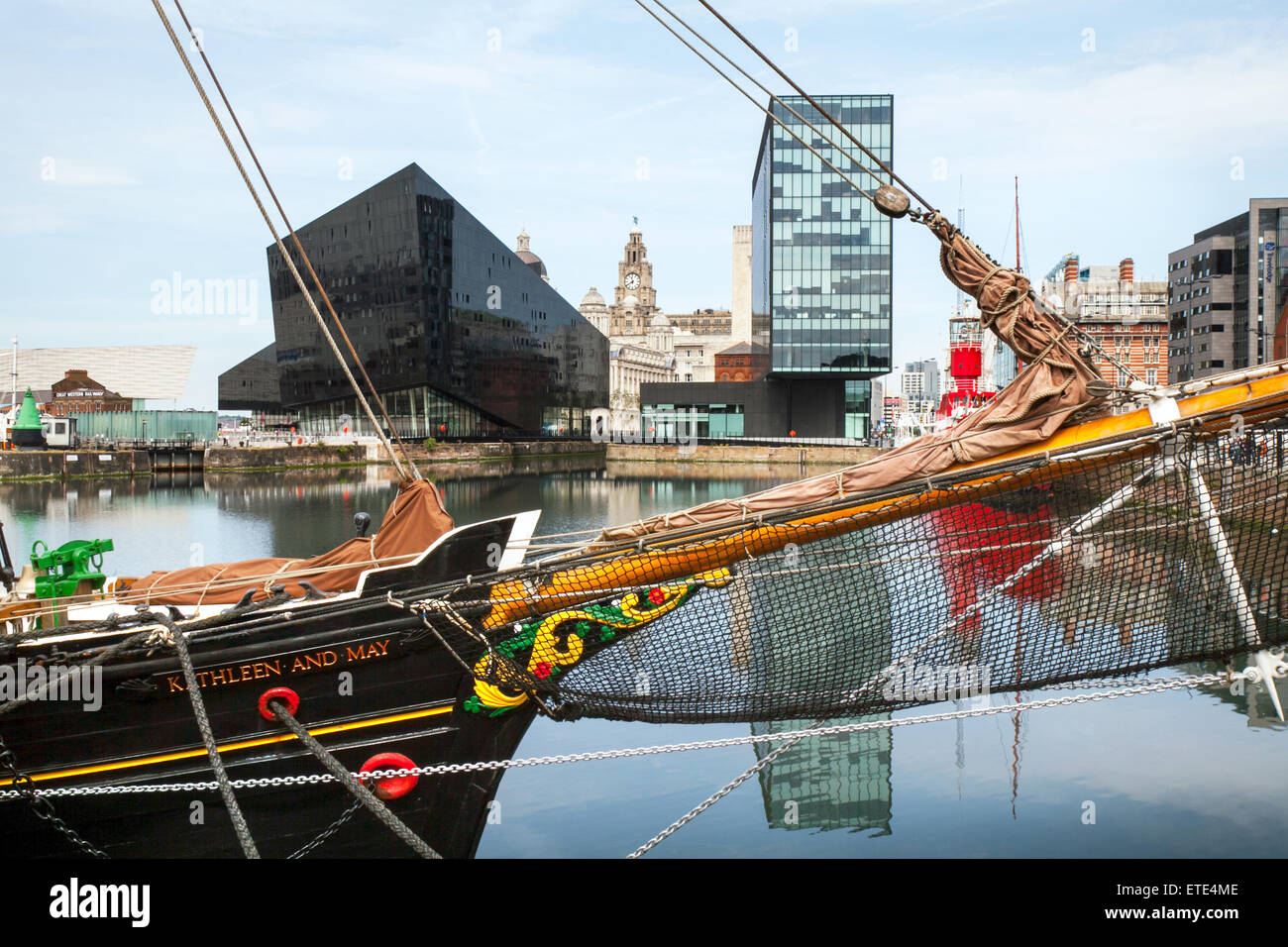Kathleen and May Tall ship, British built wooden hull three masted top sail schooner moored in Canning Dock with Mann Island Development on the

Image details
Contributor:
MediaWorldImages / Alamy Stock PhotoImage ID:
ETE4MEFile size:
28.4 MB (1.4 MB Compressed download)Releases:
Model - no | Property - noDo I need a release?Dimensions:
3861 x 2574 px | 32.7 x 21.8 cm | 12.9 x 8.6 inches | 300dpiDate taken:
12 June 2015Location:
Livepool, UKMore information:
The Kathleen and May is the last remaining British built wooden hull three masted top sail schooner. Registered in Bideford, North Devon, but presently based in Liverpool, she is listed as part of the National Historic Fleet. She was built in 1900 by Ferguson and Baird at their Connah's Quay, Flintshire yard, for local shipping company Coppack Bros. Constructed with a doubled frame of oak, these were covered by 3 inches (76 mm) thick seasoned pitch pine planks, fastened to the frames with treenails and iron bolts. Equipped with the first known fitting of Appledore roller reefing, the sails are reefed by a ratchet lever that engaged the cogs on the Gaff boom, thereby winding the sail around it, and then locked to prevent the sail unwinding from the boom. Launched in April 1900 under Captain John Coppack, she was named Lizzie May after the Captain’s daughters.Placed to work on the Irish Sea, by 1908 she had sailed nearly 40, 000 miles (64, 000 km), when she was sold into the coal-shipping fleet of Martin J Fleming of Youghal, Ireland, and renamed the Kathleen and May after his daughters. Fleming modified her, adding before World War I both a longer lower yard to lengthen the middle sail, and a martingale was fitted to the bowsprit. She now plied her trade between Youghal and the ports of the Bristol Channel, as a coal lugger. In 1931 she was sold to Captain Jewell of Appledore, North Devon. ON arrival in her new home port, she was fitted with an 80 brake horsepower (60 kW) Beardmore diesel engine, and with her topsails removed her topmasts were reduced in height. After surviving the storms of February 1936, in 1937 she experienced engine trouble in sight of Youghal’s lighthouse, but managed to make port. In 1943, her engine was upgraded to a 125 brake horsepower (93 kW) Deutz diesel.